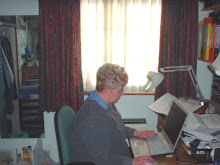It was January 11 when I wrote that I was attempting to make a database from an OCR scan of Brown’s Directory of Toronto dated 1861-62. On Friday (11 February), I had a listing of the complete street directory of approximately 8500 entries. OCR is workable on 19th century printing after all, but find-and-replace was far more useful than the automated spell checker that the software makers expect users to employ.
I have also experimented with using OCR on the “names directory” in Brown . Having got as far as the D’s, I have decided that it is not worth the effort. In the “street directory” people are arranged by their addresses and the street names only come up as headers; while, in the names directory, there is an address on every line. OCR can find no uniformity in these street names, so there is no time saved over copy-typing. It also appears that entries in the alphabetical list are one per house, no more than in the street directory. Mitchell’s Directory of three years later included most employed people whether they were head of household or not. There is not point on duplicating Brown’s Directory by transcibing a second lot of the same information.
The work of matching the census to my new directory database had now begun. The first ward I attacked was St Andrew’s which included many forms for commercial premises and where street names were omitted for the first division (Yonge Street west to York, Queen West to Adelaide). I had added as many clues from these forms as I could to my transcription including all notes stating “Personal details at place of residence”, signed by the proprietor and, maybe, giving his home address. Two of the first three forms with nameless proprietors have now been matched to actual people. For instance, Mr Leask’s handwriting was very hard to read and I had not been able to recognize the street he lived on, although the house number was 174. A quick inspection of my sorted digitized database found him at 174 Gerrard Street East, as well as the nature of his business downtown.
This kind of discovery challenged me to continue the census matching process. I have now finished the letter A for five wards. Two more city wards and the suburbs of Yorkville and East York to go. I hope temptations won’t lead me astray before the end of the alphabet. Certainly, if Brown’s Directory had come into my hands earlier, Caverhill and Mitchell would never have been done.
Subscribe to:
Post Comments (Atom)




No comments:
Post a Comment